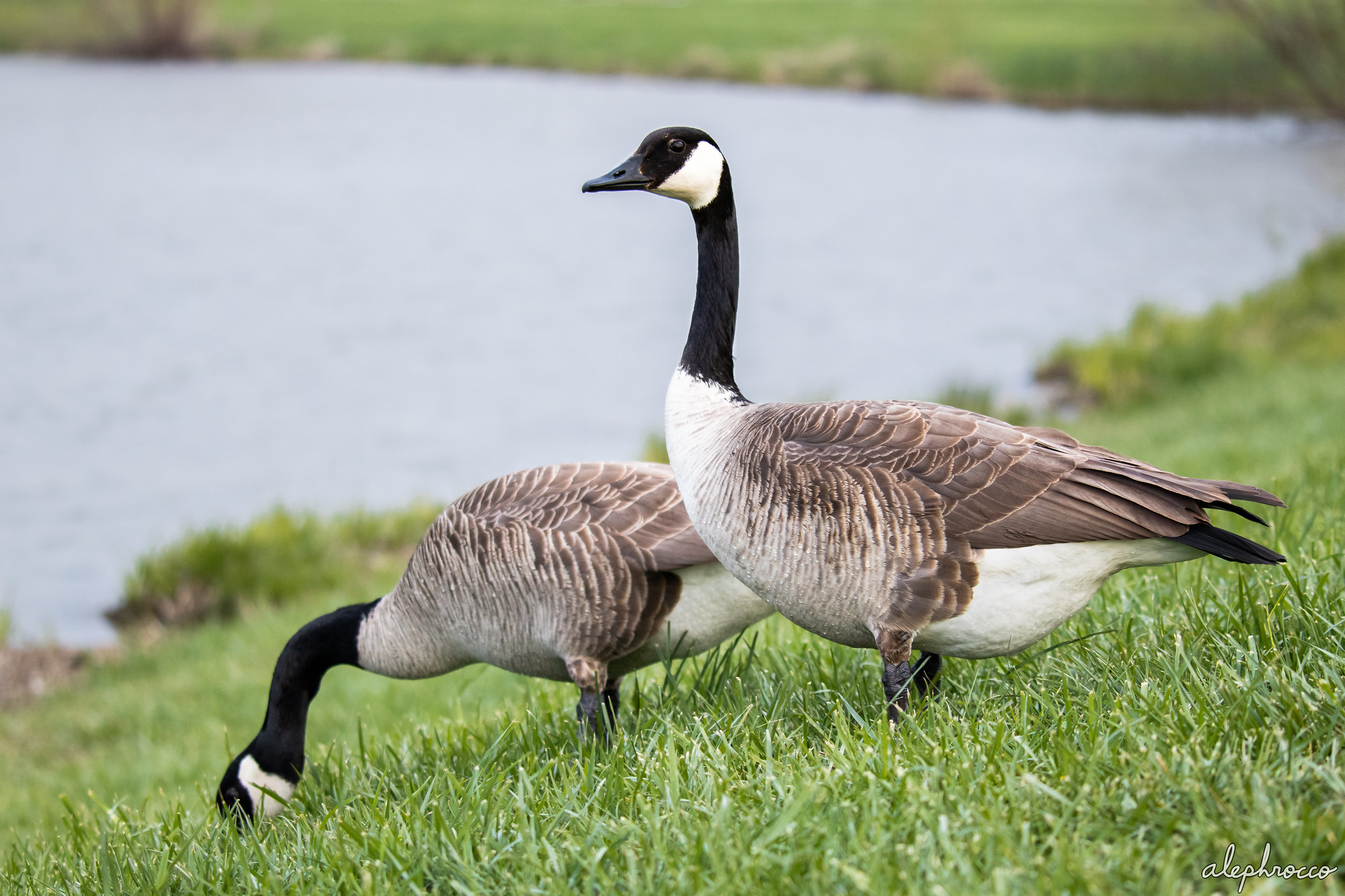
A mute swan (Cygnus olor) floats around a pond, occasionally submerging its head for several seconds at a time. Mute swans feed on a variety of vegetation, including the leaves of aquatic plants, algae, and grasses. To tear plant matter loose from the substrate, they are equipped with a corrugated lower bill and well-developed bill and neck musculature. Mute swans are native to the Palearctic, but have become established in North America after successive imports from Europe during the late 1800s. Although certainly a striking bird to see up close (with a wingspan up to 8 feet wide!), invasive populations pose a risk to native waterfowl and aquatic flora through overgrazing damage and displacement. Mute swans are very territorial animals, lending themselves towards direct agonistic conflict with other waterfowl. Native trumpeter swans (C. buccinator), for example, have become a conservation concern due to competition for food resources and nesting sites with mute swans.


